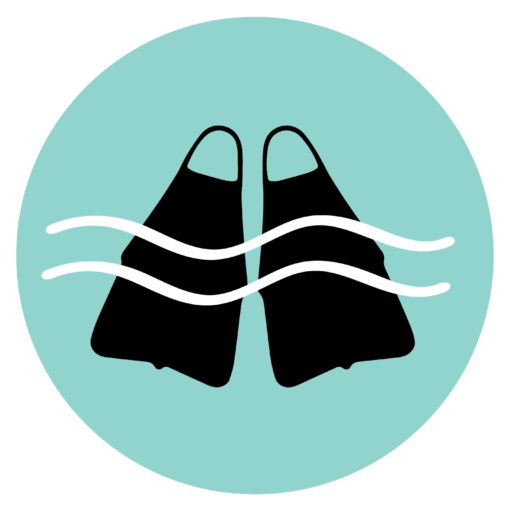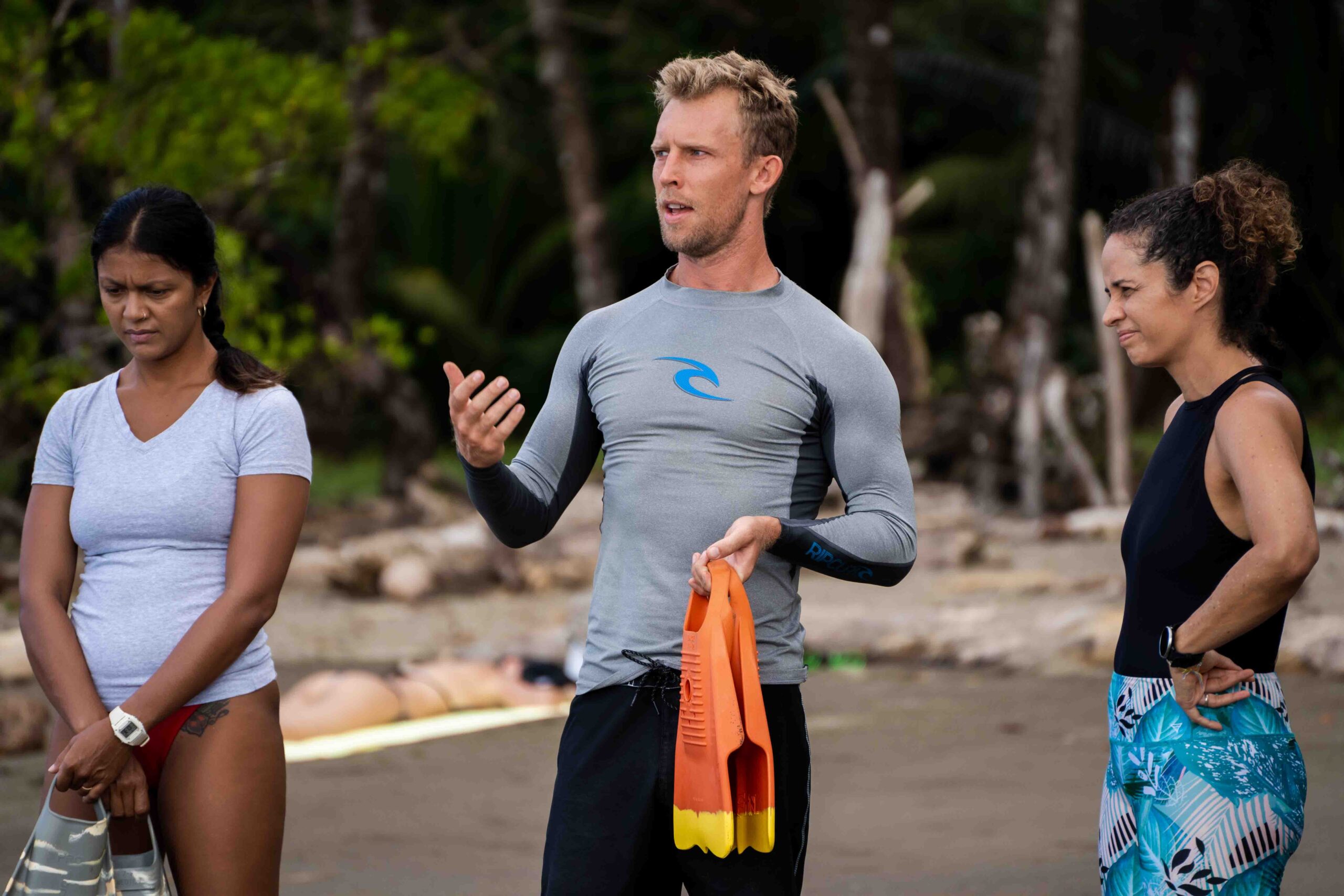When I first started teaching bodysurfing, I had no idea what I was doing.
Prior to 2020, I had never taught bodysurfing and couldn’t find any information on how to do it. I had already been teaching board-surfing for several years, but bodysurfing was a whole different ballgame.
Just because I was an experienced bodysurfer didn’t necessarily mean I could teach it. I figured out how to bodysurf as a kid—no one taught me how to do it—so I had no methodology for teaching others.
Bodysurfing builds ocean confidence
The reason I wanted to teach bodysurfing was to help my surf students feel safe and confident in the ocean. It’s much easier to achieve this goal—ocean confidence—without having to worry about controlling a big, clunky surfboard.
Furthermore, it never made sense to me why so many surfers can’t bodysurf. In fact, I have witnessed many surfers struggle to swim back to the beach after wiping out and losing their surfboard due to a broken leash.
I learned that the surf leash wasn’t invented until the 1970s, so every surfer before that time must’ve known how to bodysurf.
“The surf leash broke up surfing and bodysurfing,” notes surf historian Matt Warshaw. “Up to that point, the two methods of wave-riding had been forever united (wipeout, lose board, bodysurf, repeat).”
It was this realization that motivated me to disseminate the skill of bodysurfing to the masses. There are millions of new surfers taking to the water each year, but none of them are learning the most basic and essential skill!
It is my contention that every surf school should teach bodysurfing as a prerequisite. But the main question I was still trying to solve was how to do this.
What should this “learn to bodysurf” curriculum look like? I had become obsessed with the idea of finding a step-by-step methodology for teaching bodysurfing when I finally had a stroke of luck.
The art of wave riding
Throughout the course of my research into the sport of bodysurfing, I kept reading about a rare book from the 1930s titled The Art of Wave Riding by Ron Drummond.
This bodysurfing “how-to” manual had an initial print run of about 500 copies and was the first published work on surfing of any kind, making it extremely valuable and hard to find. Ultimately, I had to request a reading of an original copy at UCLA’s special collections library just to get my hands on it.
Drummond’s intention for writing The Art of Wave Riding was to educate the masses about the sport of bodysurfing:
Wave riding—without a surfboard—is a sport with which few people are familiar, and it is undoubtedly in its initial stages of development. There are no books of instruction on the subject, and at present only a few of the more athletically inclined have become proficient wave riders.
Although Drummond fell short of his goal to usher in a bodysurfing renaissance, he was no doubt the first person to introduce a concise step-by-step methodology for riding waves without a surfboard.
Thankfully, I was able to take bits and pieces of Drummond’s methodology and apply it to my surf students. The most important aspect I learned from Drummond was the importance of learning how to bodysurf white water waves.
This idea had never occurred to me before because I had only ever bodysurfed green (breaking) waves. But a beginner student may not feel comfortable in the green wave zone where they cannot touch the seafloor and therefore must be a relatively strong swimmer.
Teaching students how to bodysurf white water waves in waist-deep water was an absolute game-changer. White water bodysurfing doesn’t require equipment or advanced swimming ability—anyone can do it!
Teach your friends to bodysurf in the white water
I have now been teaching people how to bodysurf for over three years. After working with hundreds of newbies, I have seen the incredible ripple effect of teaching others how to bodysurf.
What makes me most proud is watching my students incorporate bodysurfing into their lives and spread the stoke to others. Some of my former students are now teaching bodysurfing lessons on their own!
So, without further ado, I would like to share my “learn to bodysurf” methodology with you so that you can share it with your friends and loved ones! Make sure to practice these techniques on your own first before transmitting to others.
The first step in learning how to bodysurf is catching white water waves in the streamline position. Make sure to plan your bodysurf session around low tide when the walls of white water are most powerful. The goal is to turn your body into a surfboard and ride the white water for as long as possible.
Standing in thigh-deep water, keep your eyes on the horizon and look for a big wave breaking far away from you. By the time the wave gets to you, it should be a fast-moving wall of whitewater.
Once you identify a good ledge of whitewater approaching, turn toward the shore and continue to watch the wave over your shoulder. As you prepare to launch into the streamline position, stand with your arms down by your sides and your knees slightly bent.
Make sure to take a deep breath before the wave arrives so that you fill your body with oxygen and become more buoyant. Because your face is submerged underwater, you will need to release a gentle stream of air out your nostrils so you don’t get water up your nose.
Just before the wall of whitewater hits your backside, bring your chest down to the water and swing your arms out in front of you as you gently launch yourself out in front of the oncoming wave.

In the streamline position, the goal is to keep your body long, straight, and buoyant. Think “superman position” but with your face submerged underwater and your limbs squeezing in toward your midline. Focus on keeping your entire spine (including your neck) in a straight line: biceps squeeze ears, hands and feet press together.
As you hydroplane across the surface of the water, bring some awareness to your feet and hands as they are the steering mechanism responsible for guiding you where you want to go.
The ultimate goal of white water bodysurfing is to ride a wave from waist-deep water all the way to the beach without using any equipment (just your body). Once you can do this with relative ease, you will be ready don a pair of swim fins and begin catching your first green waves!


